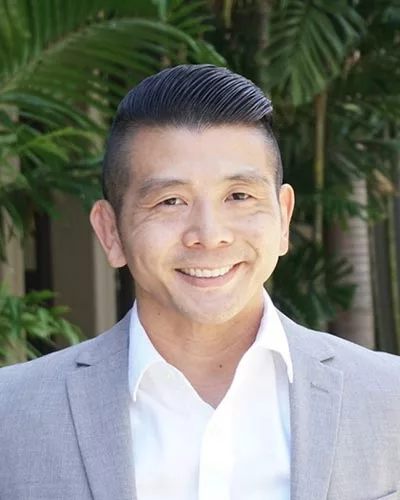For those majoring in Psychology at UH Mānoa, the experience is much like walking a pathway. At first, the road is wide to accommodate many, since Psychology in the College of Social Sciences (CSS) is one of the most popular undergraduate majors on campus. After earning bachelor’s degrees, most exit the pathway to pursue careers. But, for those who want to earn graduate degrees in clinical/community studies, they come to that proverbial fork in the road.
If bachelor-degree holders want to become clinical psychologists, but don’t want to spend years filled with research, they may choose the left pathway to a Doctor of Psychology (PsyD). Focusing largely on direct treatment of patients, this degree is offered by private universities in Hawai‘i.
But to become a leader and implementer in the field of clinical/community psychology, guided by an emphasis on original research, they might take the right pathway to Doctor of Philosophy (PhD) in Psychology. CSS receives about 100-200 applications annually for the program, but only the top 3-5% are accepted. It takes an average of six to eight years from acceptance to graduation, since only a handful of faculty can serve as mentors for the selected graduate students and post-doctoral residents.
“Psychology PhDs tend to be the supervisors, administrators, program creators and trainers of therapists,” said Professor Brad Nakamura, director of the Center for Cognitive Behavior Therapy (CCBT) and a licensed psychologist. “Whether through practicum work, like doing diagnostic evaluations and treatment of kids in the Department of Education (DOE) or Department of Health (DOH), or researching evaluation work through our projects, the big-picture question is, ‘Will the project impact the mental health system?’ We are making real contributions to infrastructural, architectural changes for mental health services.”
One of Nakamura’s chief areas of research at CCBT is “developmental psychopathology of anxiety,” and its related disorders – such as depression, trauma, inattention/hyperactivity and oppositional behaviors – affecting children and adolescents, and their families. This means many of his graduate students are interested in the health and mental well-being of youth, too. Of course, that focus has heightened since 2020, when COVID profoundly impacted health and mental health worldwide, especially among children and teens. The federal Centers for Disease Control and Prevention has cited more suicide attempts among adolescents since the onset of COVID – increasing by 31% in 2020, compared with 2019. In February and March 2021, emergency room visits for suspected suicide attempts were 51% higher among girls ages 12-17 compared to the same period in 2019. In 2023, Mental Health America released a report indicating 16% of surveyed youth having at least one major depressive episode in the past year, and that youth mental health problems are on the rise. The American Association of Pediatrics was one of only a few national professional organizations NOT to support COVID-inspired school lockdowns and 100 percent distance learning due to their negative impacts on youth mental health.
“One thing that became clear is we are social creatures and need social contact and interaction, all of the wonderful things that go along with school and that we took for granted,” said Nakamura. “So when those important human connections went out the window, plus the added stress and anxiety of financial insecurities experienced within families, there was a gigantic mental health crisis.”
Thus there is a heightened need for mental health access and education in clinical research and treatment for youth, including child therapy, parent education and training, in both individual and group formats. It is especially dire in rural areas such as Lanai, Moloka‘i and Hawai‘i Island, which is Nakamura’s home turf. “Growing up in Hilo, I saw the need. The Big Island has about 13% of the state’s population but represents 30-40% of Hawai‘i residents without private health insurance and who depend on the DOE or DOH for health coverage,” said Nakamura, a 1996 Waiakea High graduate. “It’s why I’m strongly committed to increasing the quality of public mental health services in Hawai‘i.”
Asked how rewarding his work is, Nakamura gets reflective and even a little choked up. Meeting with PhD candidates several times a week, over the course of six to eight years, is arduous and demanding for both student and professor. It’s an intense program, with the pinnacle being the final year of clinical training on the continental U.S. That’s when all of the studying, and mentoring by Nakamura and other CCBT faculty, come to a crescendo. “They do their last year of training in a place they don’t know, far away from Hawai‘i, 40-60 hours a week, in a stressful environment,” said Nakamura. “So after they come back, they say, ‘Oh, now we understand why you were always so hard on us, because we were fully prepared. We were fine. Thank you for helping to train us.’”
And to lead them over the finish line on the right pathway.
